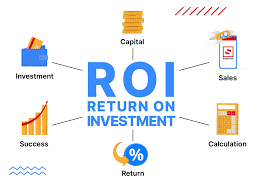Accounts payable is an important but complicated process. It involves managing numerous invoices and ensuring the data recorded is accurate and up-to-date. The problem with synchronizing invoices and payments is that it takes a lot of time, and while it might be satisfying to cross off a task when you are done, the work doesn’t stop there. It uses automated accounting solutions like QuickBooks accounting services to reconcile the accounts payable data to ensure the accuracy of the process. It is possible that automated accounting is the future of payables reconciliation. This article discusses the benefits of using automated accounting for payables reconciliation and explores ways to incorporate it into your business model.
What is Automated Accounting?
Automated accounting uses technology to automate the process of recording, classifying, and storing financial transactions. This can include everything from using software like Zoho, QuickBooks accounting services, etc., to automatically generate invoices to using artificial intelligence (AI) to identify and correct errors in financial data.
If you are always looking for ways to improve efficiency and accuracy in your work, automating accounting processes is one of the most effective ways. Automated accounting aims to reduce or eliminate the need for manual input from accounting staff, which can save time and reduce errors.
There are a number of software programs available that can help businesses automate their accounting processes. We have listed a few of the most popular options below, along with a brief description of each.
- Xero – Xero is an online accounting software that offers accounts payable reconciliation as one of its features. With Xero, businesses can connect their bank accounts and automatically match invoices to payments.
- QuickBooks – QuickBooks is another popular accounting software program that offers payables reconciliation. QuickBooks accounting services also allow businesses to connect their bank accounts and automatically match invoices to payments.
- Sage 50 – Sage 50 is an on-premises accounting software program that offers payables reconciliation as one of its features. With Sage 50, businesses can manually match invoices to payments or use the program’s auto-matching feature.
- NetSuite – NetSuite simplifies the accounting and bookkeeping process by helping businesses properly record their transactions, ensuring accuracy and real-time insight into the process. It is an ERP system that allows easy integration with other accounts payable platforms to enhance process efficiency.
- Zoho Books – Zoho Books is an accounting platform that helps businesses manage their finances and also allows integrations with other accounting tools and platforms related to accounts payable, accounts receivable, payroll, etc.
How Can Automated Accounting Help with Payables Reconciliation?
One area where automated accounting can be particularly helpful is with accounts payable reconciliation. This is the process of matching invoices to purchase orders and ensuring that all invoices are accounted for. It can be a time-consuming process, especially if done manually.
But by automating payables reconciliation, you can save time and ensure that all invoices are accounted for accurately. There are several software programs that can help with this, such as Tallyfy Accounts Payable or FloQast AP Automation. These programs can match invoices to the transactions recorded and the amount spent.
The Challenges of Manual Accounting
While automated accounting is becoming increasingly popular, many companies still rely on manual accounting methods. This can pose several challenges, particularly when it comes to reconciling payables.
One of the biggest challenges of manual accounting is the potential for human error. When accountants have to manually input data, there is always the possibility that they will make mistakes. This can lead to problems down the line, such as inaccurate financial statements.
Another challenge of manual accounting is that it can be very time-consuming. If a company has a large volume of transactions, it can take a long time to enter all the data into the system. This can lead to delays in getting invoices paid and cause frustration for suppliers and customers.
Finally, manual accounting can also be quite expensive. Companies must invest in software like QuickBooks accounting services and hardware to support manual accounting methods. They also need to hire staff specifically to perform these tasks. In contrast, automated accounting systems require much less investment and can often be operated with minimal staff requirements.
What is accounts payable reconciliation?
Accounts payable reconciliation compares invoices and other documentation to the corresponding entries in a company’s accounting records. This exercise aims to ensure that all amounts owed by the company are accounted for and that all payments made by the company are properly documented.
This process can be time-consuming and error-prone when done manually. However, automated accounting systems can streamline payables reconciliation by automatically importing invoices and other data into the accounting software. This eliminates the need for manual data entry and reduces the chances of errors.
In addition, automated accounting systems can provide real-time visibility into a company’s payables position. This allows businesses to make more informed decisions about when to make payments and helps them avoid late payment penalties.
Overall, automating payables reconciliation can save businesses time and money. It can also improve accuracy and decision-making around payments.
Why automate payables reconciliation?
There are many reasons to automate payables reconciliation. The first and most obvious reason is to save time. When you automate payables reconciliation, you no longer have to spend time manually reconciling your accounts payable each month. This can free up a significant amount of time so that you can focus on other aspects of your business.
Another reason to automate payables reconciliation is to improve accuracy. When you automate the process, there is less room for error. This can lead to more accurate financial statements and a better understanding of your business finances.
Automating payables reconciliation can also help you save money. When you automate the process, you can eliminate late payment fees and interest charges. This can lead to substantial savings over time.
How can I start automating my accounts payable reconciliation?
To start automating your accounts payable reconciliation, you will first need to find software that suits your business needs. Once you have found the right software, you must set up automated reconciliation rules. After your rules are set up, your account reconciliations will happen automatically according to the schedule you have set.
Once you have chosen a reconciliation software, setting up automated rules is easy! Simply decide how often you want your reconciliations to run and what criteria should be used for matching transactions. For example, you might want to reconcile every week and match transactions based on date, amount, and description. Most reconciliation software only takes a few minutes to set up these rules. After your automated reconciliations are set up, follow the process, sit back and relax.
What is the process of automated reconciliation?
Though numerous accounting software help with accounts payable reconciliation, including Zoho Books, QuickBooks accounting services, Xero, etc., the process is almost similar for every software. The process of automated accounting is simple. First, you need to connect your accounting software to your bank account. Next, you need to download and install the reconcile app. Finally, you need to follow the instructions on the reconcile app to reconcile your payables automatically.
Conclusion
While it may seem like automated accounting is the new kid on the block, it has actually been around for quite a while. And, as with any new technology, skeptics always wonder if it is worth the investment. However, when it comes to automating your payables reconciliation process, it is definitely worth considering. Not only will it save you time and money in the long run, but it will also help improve your reconciliation accuracy. So, if you are looking for a way to streamline your accounting process, it is recommended and beneficial to give automated accounting a try.
9 Tips to Achieving a Profitable Accounting Software Application




